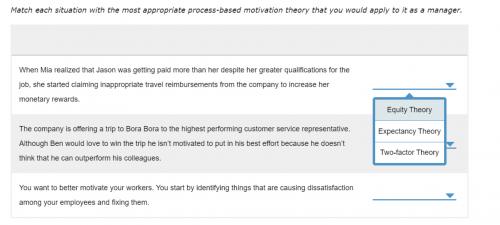 1
1 C. Fair Credit Reporting Act
Explanation:
Fair Credit Reporting Act was brought into action to lay governance on the credit bureaus regarding their consumers' credit information. The act presents the rules and regulations to be followed to obtain and present the credit details of the consumers. Also, it looks over the manner in which the details are shared with the consumers and others for various other purposes.
According to the given excerpt, the Fair Credit Reporting Act allows Carlos to take an action in case of any error found in his credit report.
 1
1  1
1 
To determine the possibility of expansion in the Rooney’s menu, the most important factor is feedback from the existing customers. Being a marketing consultant both internal and external factors must be considered. Internal factors - company's internal available resources such as fund, employees etc. Capabilities and strategies.
External aspect is environmental context competitor's customer wants, needs and potentials.
Options:
a. The small land-owner had an advantage in the negotiations by possessing something that the mine needed.
b. It allowed for equality in the negotiations between interested parties.
c. The impoverished context allowed the government to gain access to the land.
d. No real impact?
Answer:
c. The impoverished context allowed the government to gain access to the land.
Explanation:
The explorations that led to the discovery of Tintaya mine go back to 1917. In 1971, the Peruvian government promoted the exploitation of the mine. In 1980, the expropriation of approximately 4,000 hectares of land, owned by the communities, was carried out. It is for this reason that started a dispute between the commoners and the Company. In 1985 the exploitation of Tintaya began and it became the third producer of the country. In 1994, the mine was bought by Broken Hill Proprietary (BHP), who subsequently merged with the company Billiton, forming the second biggest group in the world production of minerals. In 2001, the first proposal for the framework agreement was made public. An agreement was reached and the framework agreement was consolidated in 2003. The signature of the framework agreement was an innovative milestone. Never before, a mining company had agreed to transfer a percentage of profits to communities and to engage to dialogue with them at all times. In 2005, a violent takeover occurred of the Tintaya facilities. A reformulation of the framework agreement was demanded. The implementation of the framework agreement was taking place very slowly. The president of BHP Billiton had to suspend the mining activity until a new agreement was reached. Then the negotiations began again. Xstrata Cooper (now Glencore) bought Tintaya from BHP Billiton in 2006. The owner changed, but the same conflicts and mobilizations continued until 2012. The last stoppage lasted eight days. During this paralysis, violent acts occurred and even the mine was asked to close, which was completely rejected by the government. At present, no resolution or reformulation of the framework agreement has been reached.
So is often the case, the expansion of mining activity led to the expropriation or purchase of land, back in 1980, from five communities and left open conflicts (low prices, evictions, illegitimate negotiations, etc.), as well as various environmental and human rights problems.
 1
1 Answer:
Yes, she could be her own boss. She could use a sole proprietorship , also known as a sole tradership, individual entrepreneurship or proprietorship, is a type of enterprise owned and run by one person and in which there is no legal distinction between the owner and the business entity. A sole trader does not necessarily work "alone"—it is possible for the sole trader to employ other people.
[youtube=JEpWlez5-XY]Assuming Dante earned 72.50 per week multiply 50 weeks is equal to 3625 yearly. It can be his employer deducted 500 federal tax as he earns low and doesn't need to pay tax so he can claim it by filing for refund.
As it requires running informant wiretapping, training to keep tabs on everyone and threatening to charge them with critical offenses if they never turn states evidence. As it needs to be ability to monitor and interdict operations. This criminal intelligence itself is at its high risk of CR infringements.

It will provide an instant answer!
